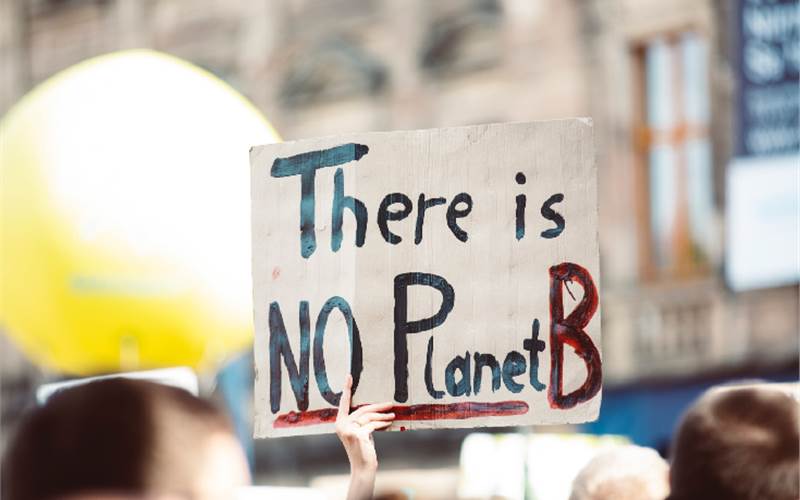Chapter III: Factoring the environment in business models
In this edition of his eight-chapter series, Ganeshkumar V, head – sustainability and climate risk, DQS India talks about making business decisions considering the environment and society'
04 Jun 2021 | By WhatPackaging? Team
Last week during one of the conversations with a business owner, the discussion revolved around negative externalities. If negative externalities are calculated and factored in the balance sheet – how much impact will it have? The business owner in response took the famous argument “the business of business is business” (Friedman 1970).
It argues that business should focus on shareholder value maximisation by looking for the optimal financial return and risk combination. Climate activists say that these business models were developed in the age of resources abundance when natural resources were plenty and carbon emissions were limited. Hence naturally, no environmental concerns were factored into business decisions and the focus was mainly on labour and capital. But things are changing and now, we are in a transition to switch to low carbon and a more circular economy to overcome these environmental challenges.
Here are two famous negative externalities examples that highlight the impact of business decisions on environmental and social aspects - the British Petroleum Deepwater Horizon oil spill and the Rana Plaza factory collapse.
British Petroleum Deepwater Horizon oil spill
Oil began to spill from the Deepwater Horizon drilling platform on 20 April 2010, in the British Petroleum (BP)- operated Macondo Prospect in the Gulf of Mexico. An explosion on the drilling rig killed 11 workers and led to the largest accidental marine oil spill in the history of the petroleum industry. The US government estimated the total discharge at 4.9 million barrels.
After several failed efforts to contain the flow, the well was declared sealed on 19 September 2010. A massive response ensued to protect beaches, wetlands and estuaries from the spreading oil using skimmer ships, floating booms, controlled burns and oil dispersant. Oil clean-up crews worked on 55 miles of the Louisiana shoreline until 2013.
Oil was found as far from the Deepwater Horizon site as the waters of the Florida Panhandle and Tampa Bay, where the oil and dispersant mixture was embedded in the sand. The months-long spill, along with adverse effects from the response and clean-up activities caused extensive damage to marine and wildlife habitats and the fishing and tourism industries. Numerous investigations explored the causes of the explosion and the record-breaking spill.
Notably, the US government’s September 2011 report pointed to defective cement on the well, laying the fault mostly with BP and also the rig operator Transocean and contractor Halliburton. Earlier in 2011, a National Commission (2011) likewise blamed BP and its partners for a series of cost-cutting decisions and an inadequate safety system, but also concluded that the spill resulted from “systemic” root causes and that without “significant reform in both industry practices and government policies, the incident might well recur”.

Rana Plaza factory collapse
The Rana Plaza collapse was a disastrous structural failure of an eight- storey commercial building on 24 April 2013 in Bangladesh. The collapse of the building caused 1,129 deaths, while approximately 2,500 injured people were rescued alive from the building. It is considered the deadliest garment factory accident in history and the deadliest accidental structural failure in modern human history. The building contained clothing factories, a bank, apartments, and several shops. The shops and the bank on the lower floors were immediately closed after cracks were discovered in the building.
The building’s owners ignored warnings to evacuate the building after cracks in the structure appeared the day before the collapse. Garment workers, earning 38 Euros a month, were ordered to return the following day, and the building collapsed during the morning rush hour. The factories manufactured clothing for brands including Benetton, Bonmarché, The Children’s Place, El Corte Inglés, Joe Fresh, Monsoon Accessorize, Mango, Matalan, Primark and Walmart.
Addressing negative externalities
Regarding our earlier discussions on the social cost of negative externalities, it’s important to note that social cost of carbon estimates do not consider the damage caused to natural ecosystems and the economic benefits they provide to humanity. Thus, the true damage caused by climate change or social impact is likely to be much greater than these partial estimates.
So, what can governments do to address the externalities of greenhouse gas emissions? The social cost of carbon provides an important part of the answer. Governments can enact public policies to ensure that the social cost of CO2 emissions is paid by the people and businesses responsible for those emissions. In the terminology of economics, negative externalities need to be internalised by adjusting the price of the polluting activity to reflect the monetary value of that externality.
This may, for instance, include putting a price on carbon emissions or requiring emitters to buy a tradable permit. Regulations such as the extended producer responsibility are few positive steps towards a circular economy, as it makes manufacturers or brands to re-think their product’s value in the entire ecosystem. The business owner looked around his printing press which was full of paper stock and chemicals all around, Rana Plaza case study really shook him off! He finally agreed that externalities have their impact more than what he imagined, and he started pondering on his business negative externalities. One step at a time!!! In the next chapter, we will move into the technical side of climate change by starting discussions around carbon emissions












 See All
See All